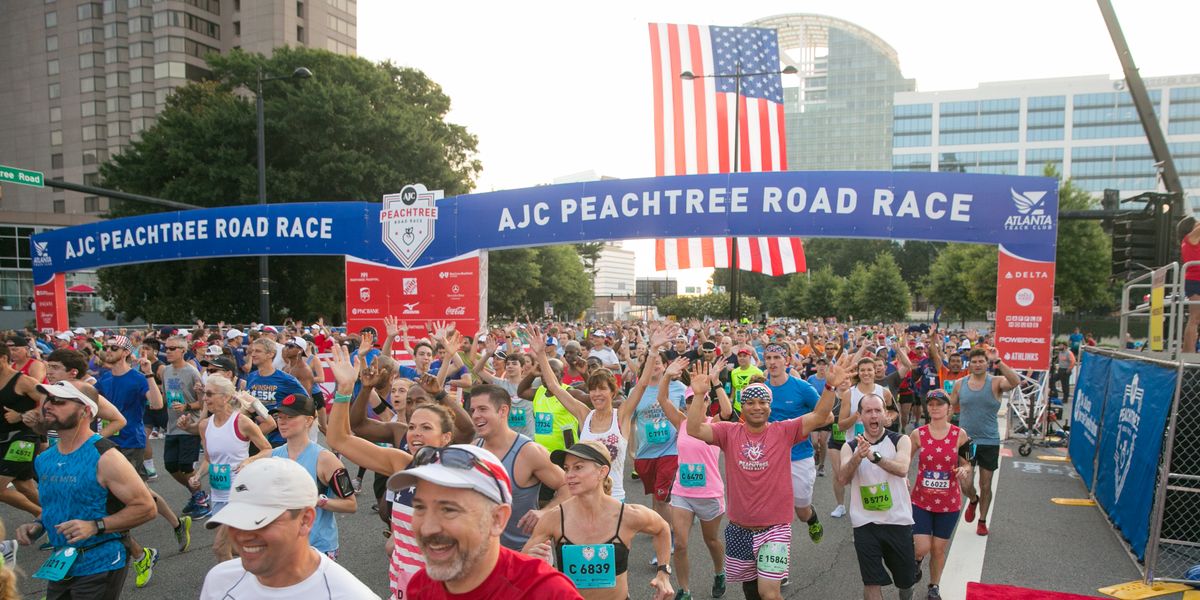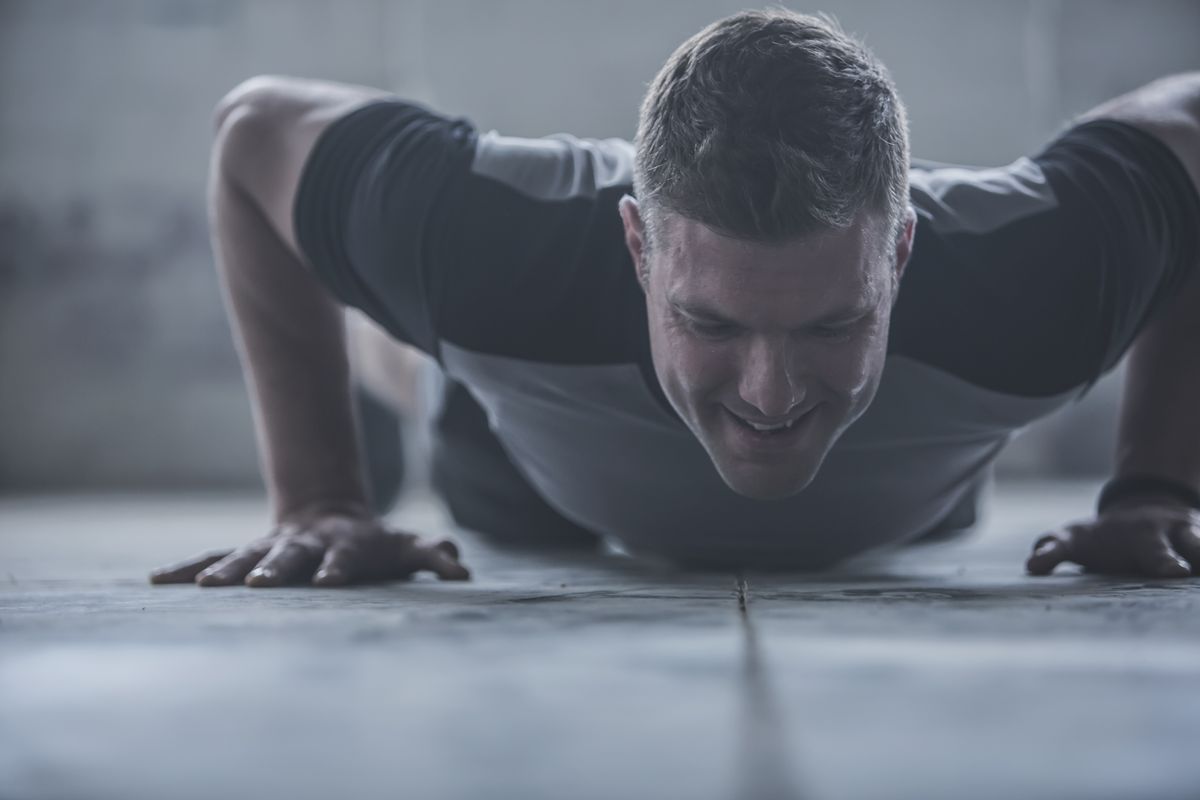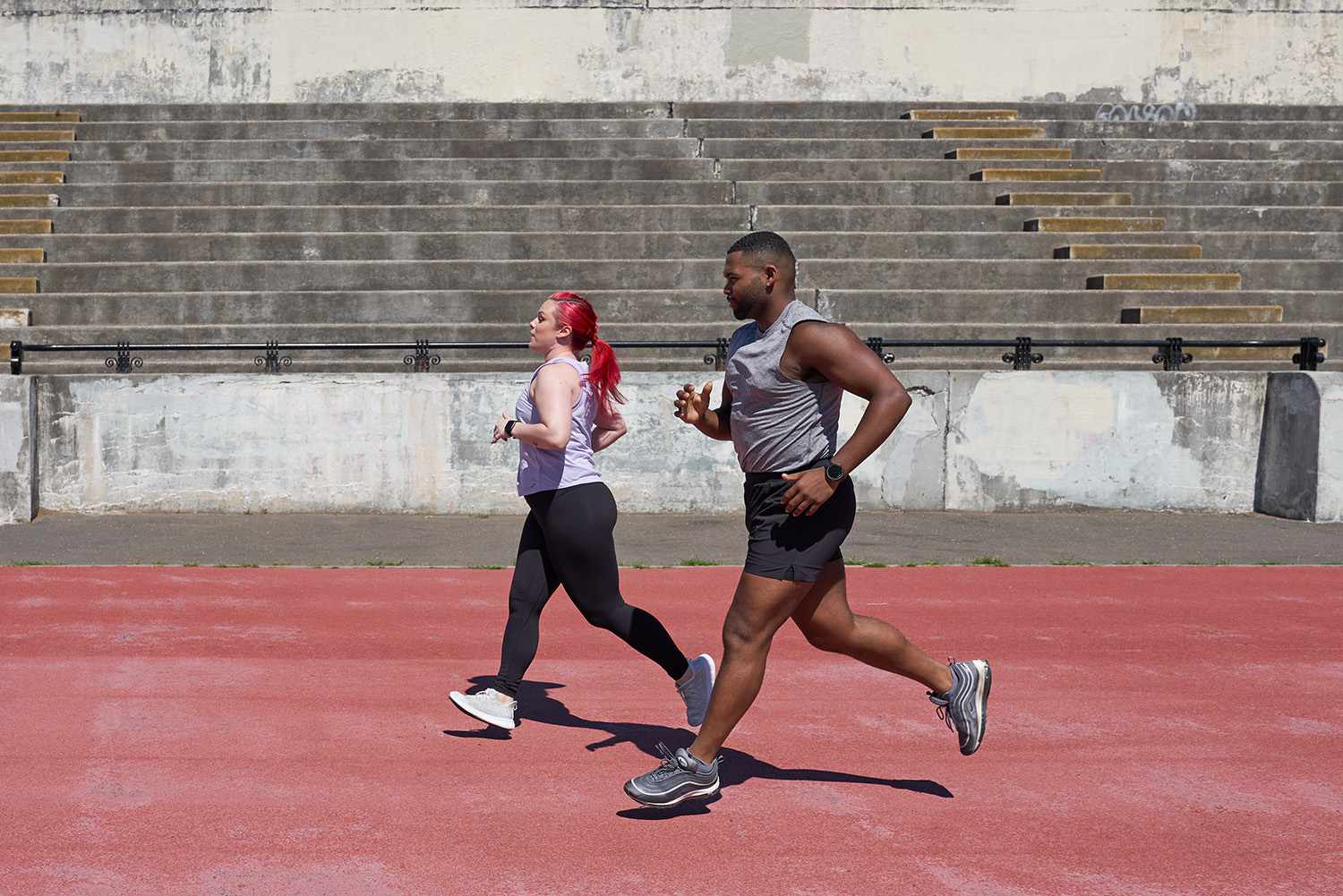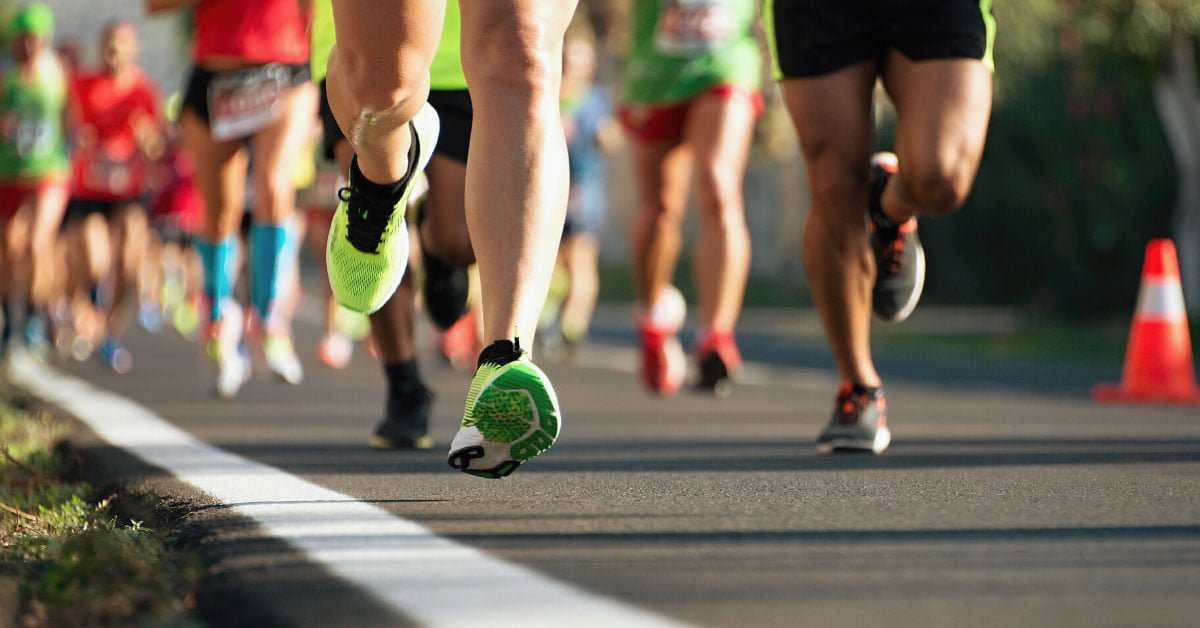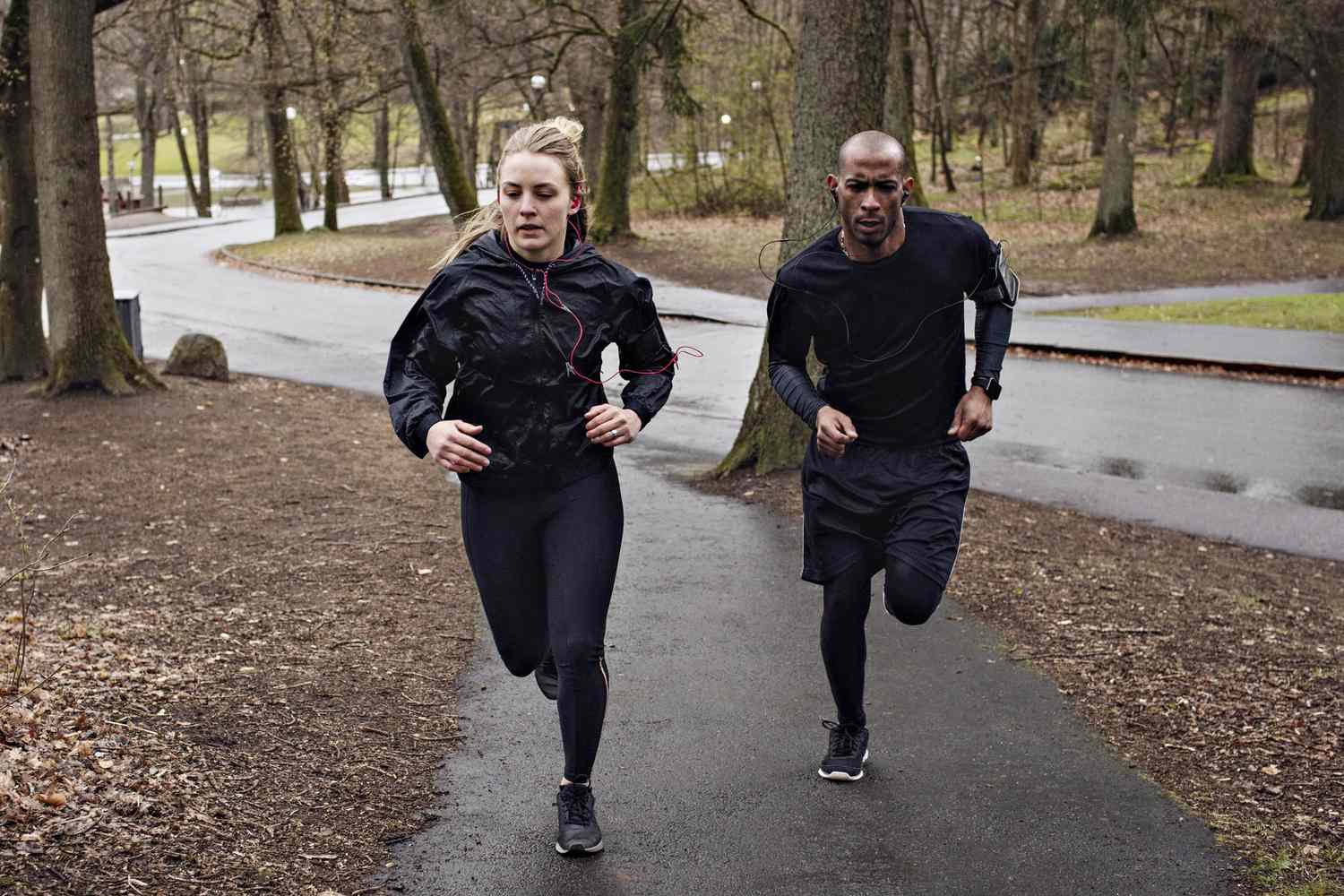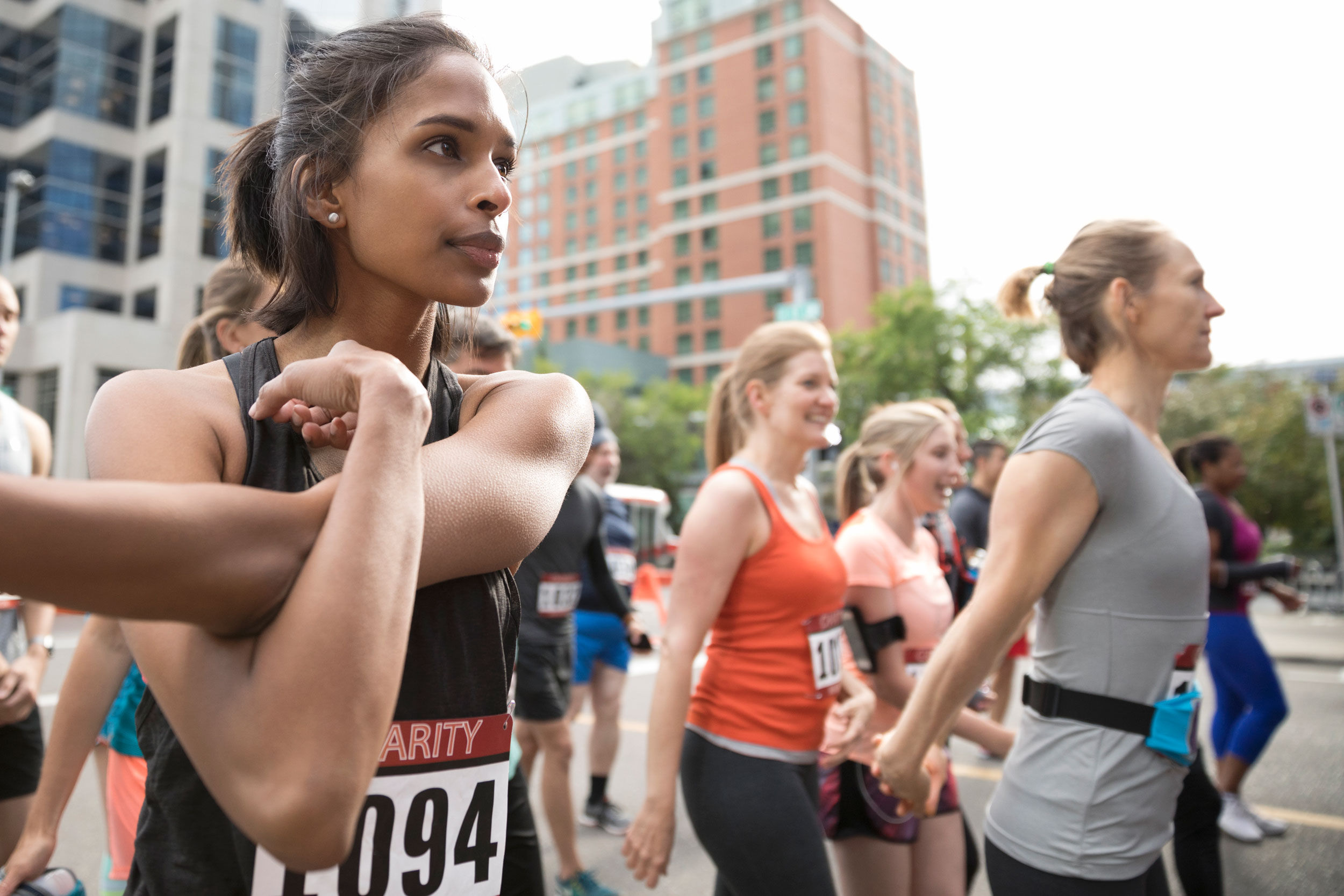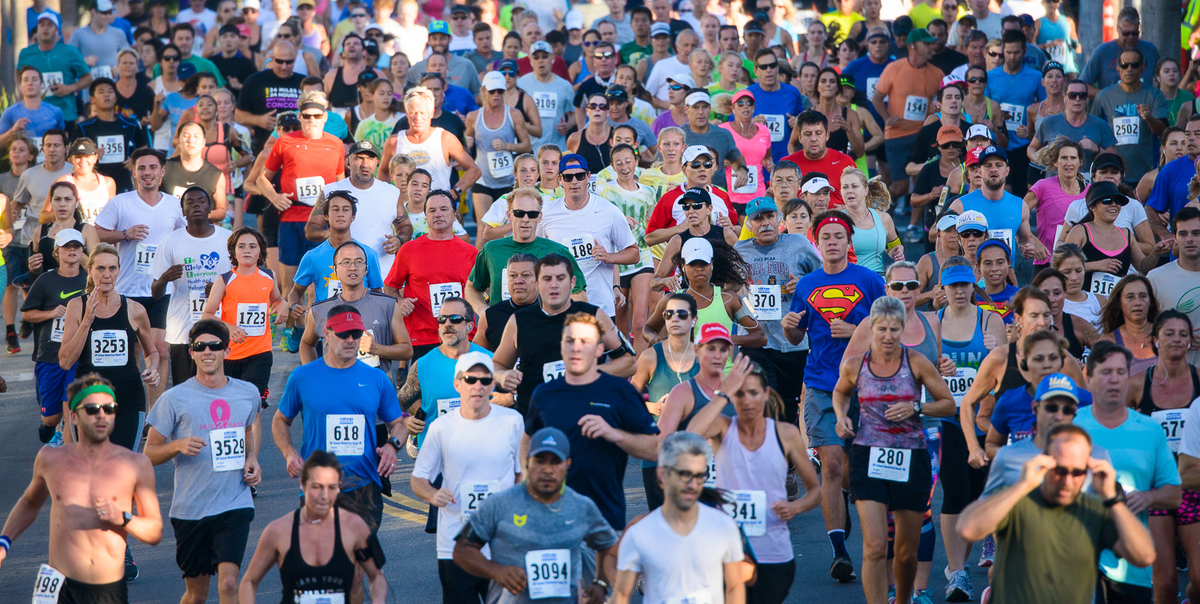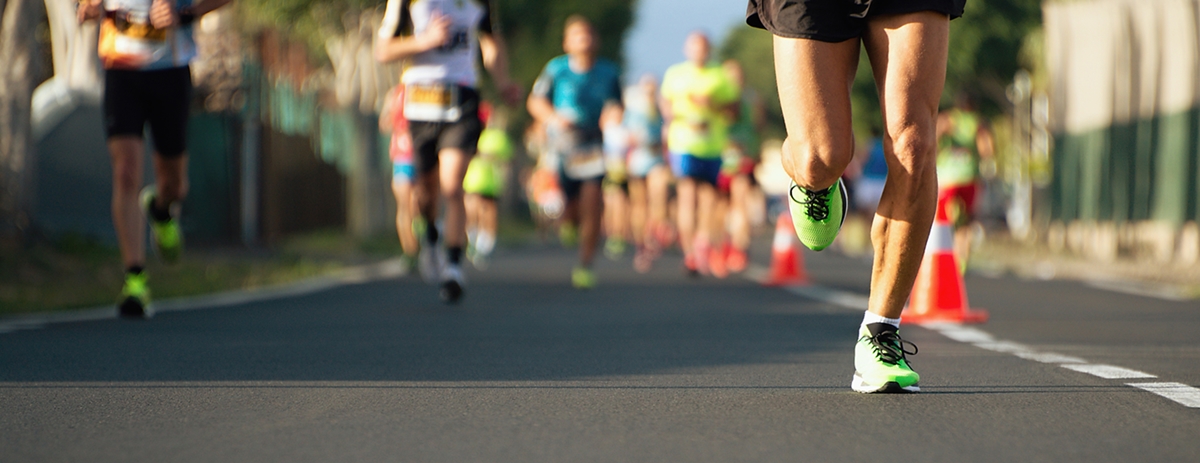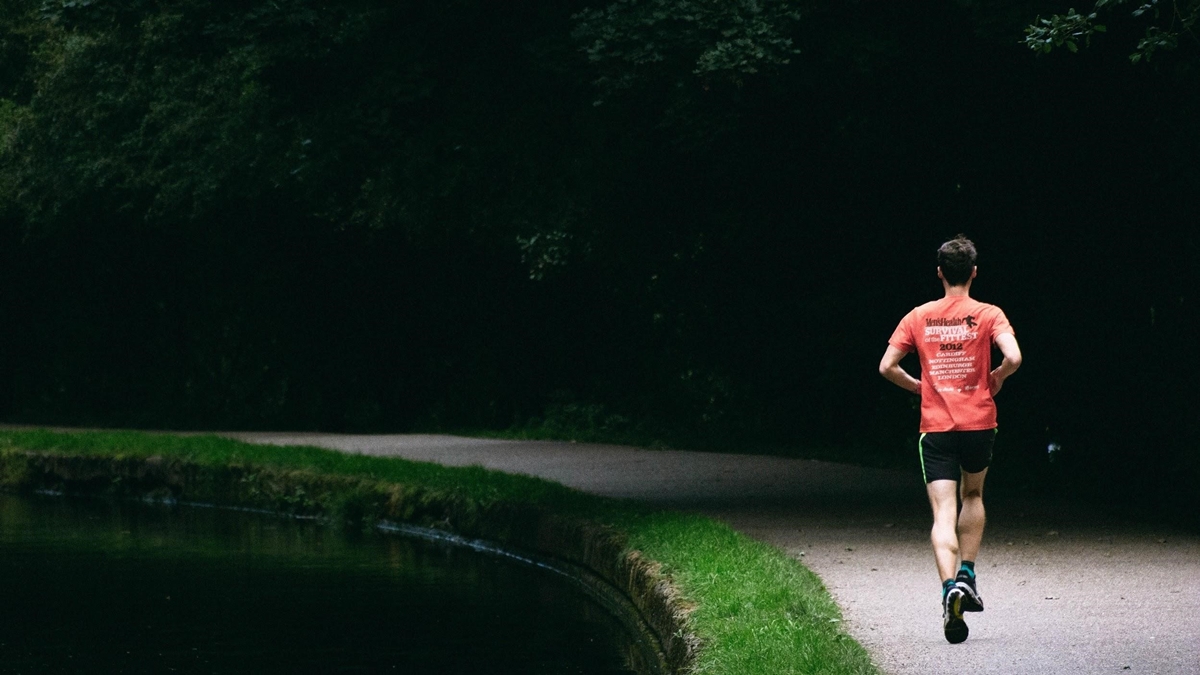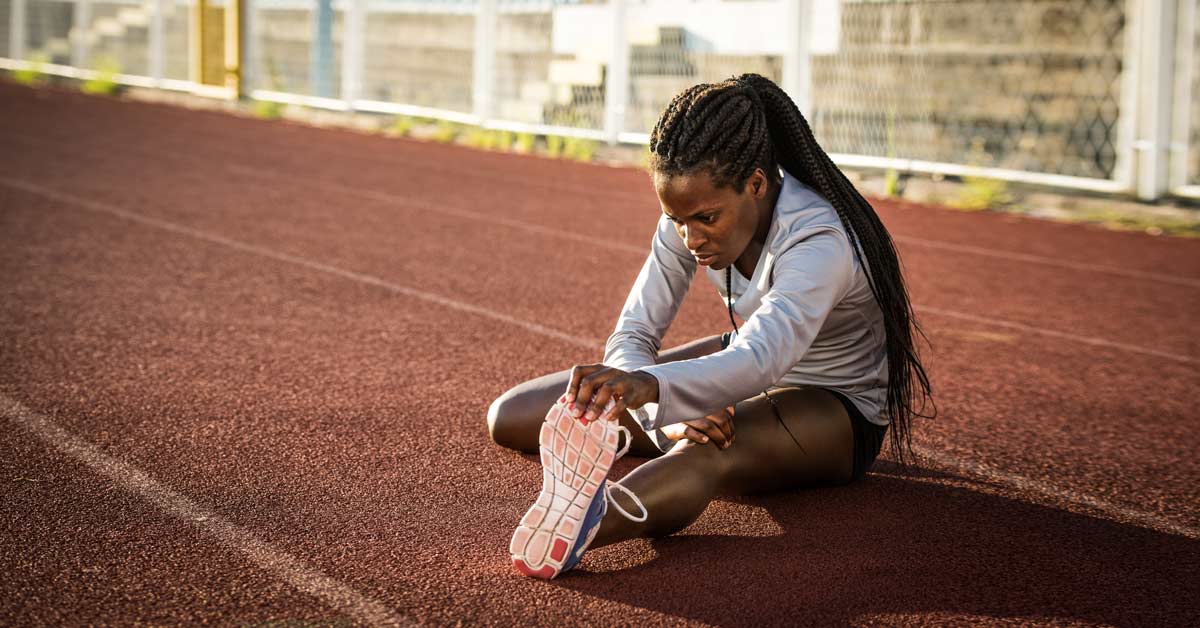

Featured
How Long Is The Warmup For A 10K Run
Modified: January 2, 2024
Discover the optimal warm-up duration for a 10K run! Featured tips and insights on how long you should warm up before tackling this challenging distance.
Introduction
Welcome to the world of running, where endurance and determination take center stage. If you’re preparing for a 10K run, you’re likely familiar with the importance of training, setting goals, and following a proper nutrition plan. But what about warmup? Many runners underestimate the significance of warming up before a 10K race, often overlooking this critical step in their training regimen.
Warming up before a 10K run is essential to prepare your body for the physical demands of the race. It not only enhances your performance but also helps reduce the risk of injuries. A proper warmup can increase blood flow to the muscles, improve joint flexibility, and mentally prepare you for the upcoming challenge.
While the duration of a warmup may vary depending on individual factors, there are some general guidelines and best practices to consider. This article will delve into the importance of a warmup, factors to consider for warmup duration, and specific exercises you can incorporate into your warmup routine to maximize the benefits.
By understanding the significance of a warmup and implementing the right techniques, you’ll be well on your way to conquering your 10K run with confidence and reducing the risk of injury. So let’s dive in and discover how to effectively warm up for a 10K race and optimize your performance.
Importance of Warmup for a 10K Run
The warmup is a crucial aspect of your 10K run preparation that should never be overlooked. It serves several important purposes that can greatly enhance your performance and reduce the risk of injuries.
Firstly, warmup exercises help increase blood flow to your muscles. This increased blood flow delivers oxygen and nutrients to your muscles, allowing them to perform at their best. It also raises your body temperature, which improves muscle elasticity and reduces the risk of muscle strains and tears.
Secondly, warming up before a 10K run helps activate your joints and improve their range of motion. As you run, your joints, such as your knees and ankles, undergo repetitive motion. A proper warmup routine can prepare these joints for the stress they will endure during the race, reducing the likelihood of joint pain or injury.
Thirdly, a warmup can have psychological benefits. It allows you to mentally prepare for the race ahead, helping you to focus and get into the right mindset. By taking the time to warm up, you signal to your mind and body that you are ready to perform and give your best effort.
Furthermore, a good warmup routine can help identify any discomfort or issues in your body. By paying attention to how your muscles and joints feel during warmup exercises, you can address any potential weaknesses or imbalances before they become more serious problems during the race.
Ultimately, the warmup is not just a physical activity; it’s an opportunity to tune in with your body, optimize your performance, and reduce the risk of injury. Incorporating a proper warmup routine into your 10K run preparation is a wise investment of time and effort that will pay off in the long run.
Factors to Consider for Warmup Duration
The duration of your warmup before a 10K run depends on various factors that are unique to each individual. While there are no set rules that apply universally, there are some key considerations to keep in mind when determining the appropriate duration for your warmup.
One important factor is your current fitness level. If you’re an experienced runner with a solid base of training, your warmup may be shorter compared to someone who is just beginning their running journey. Experienced runners often have better developed muscles and higher levels of cardiovascular fitness, allowing them to reach their optimal performance level quicker.
Your previous running experience also plays a role in determining warmup duration. If you have been consistently running and participating in races, your body may have adapted to the demands of running, requiring a shorter warmup. On the other hand, if you have been sedentary or engaged in other forms of exercise, you may need a longer warmup to prepare your body for the specific movements and intensity of running.
The weather conditions can also impact the duration of your warmup. In colder temperatures, your muscles may take longer to warm up and become flexible, so it’s important to allow extra time for warmup exercises to prevent injuries. On the other hand, in warmer temperatures, your muscles may be more pliable, reducing the need for a lengthy warmup.
Your personal goals for the race can also influence the duration of your warmup. If you’re aiming for a personal best or have a competitive mindset, you may choose to spend more time on your warmup to ensure your body is fully prepared for the race. Conversely, if you have a more relaxed approach and are simply aiming to complete the race, a shorter warmup may suffice.
It’s essential to listen to your body and pay attention to how it responds to warmup exercises. If you notice that your muscles are still feeling tight or your joints are not fully mobile after your warmup, it may be a sign that you need to extend the duration of your warmup. The key is to find the right balance that allows you to adequately prepare your body without expending unnecessary energy.
Keep these factors in mind when determining the duration of your warmup before a 10K run. Remember that it can vary from person to person and even from one training session to another. Experiment with different warmup durations during your training runs to find what works best for you.
General Guidelines for Warmup Duration
While the ideal warmup duration will vary depending on individual factors, there are some general guidelines that can help you establish a starting point for your warmup routine before a 10K run.
Aim for a warmup duration of around 10 to 15 minutes. This timeframe allows sufficient time to increase blood flow, raise your body temperature, and prepare your muscles and joints for the upcoming race.
Begin your warmup with some light cardiovascular exercises, such as jogging or brisk walking, for approximately 5 minutes. This aerobic activity helps gradually elevate your heart rate and increase blood circulation throughout your body.
After the initial cardiovascular warmup, transition into dynamic stretching exercises. Focus on stretching the major muscle groups used in running, such as your quadriceps, hamstrings, calves, and glutes. Perform each stretch for about 10 to 15 seconds, aiming to achieve a gentle stretch without any discomfort.
Next, incorporate some mobility exercises to improve joint range of motion. This can include leg swings, arm circles, or hip rotations. These movements help to lubricate the joints and prepare them for the repetitive motion of running.
Once you have completed the dynamic stretching and mobility exercises, gradually increase the intensity of your warmup. This can involve incorporating some running drills, such as high knees, butt kickers, or skipping exercises. These drills help activate the muscles and simulate the running motion, further preparing your body for the race.
As you approach the end of your warmup, it’s important to mentally prepare yourself for the upcoming run. Use this time to focus on your race strategy, visualize a successful run, and mentally reinforce your goals for the race.
Remember, these guidelines are not set in stone, and you should always listen to your body. If you feel that you need more time to warm up, don’t hesitate to extend the duration of your warmup. On the other hand, if you feel adequately prepared after a shorter warmup, you can adjust the duration accordingly. The key is to find what works best for your body and provides you with confidence and readiness for the race ahead.
Specific Warmup Exercises for a 10K Run
When it comes to warming up for a 10K run, incorporating specific exercises into your routine can help target the muscles and movements required for optimal performance. Here are some specific warmup exercises that you can incorporate into your pre-race routine:
1. Jogging or Brisk Walking: Start with an easy jog or brisk walk for 5-10 minutes. This helps increase your heart rate, warm up your muscles, and gradually prepare your body for the more intense running ahead.
2. Leg Swings: Stand near a wall or a sturdy object and swing one leg forward and backward in a controlled manner. This exercise helps improve hip mobility and loosens up the muscles in your hamstrings and quadriceps.
3. High Knees: Stand tall and march on the spot, lifting your knees as high as possible. This exercise engages your core, activates your hip flexors, and improves your running stride and cadence.
4. Butt Kickers: Jog slowly while kicking your heels up towards your glutes. This exercise targets your quadriceps while stretching your hip flexors and preparing your lower limbs for the running motion.
5. Walking Lunges: Take a step forward with your right foot and lower your body into a lunge position, keeping your front knee directly above your ankle. Alternate legs as you walk forward, focusing on activating your glutes, quadriceps, and hamstrings.
6. Ankle Circles: Sit on the ground or stand upright and rotate your ankles clockwise and counterclockwise. This exercise helps improve ankle flexibility and mobility, reducing the risk of ankle sprains during your run.
7. Arm Circles: Stand with your feet shoulder-width apart and extend your arms out to the sides. Make small circles with your arms clockwise and counterclockwise. This exercise warms up your shoulder joints and upper body muscles.
8. Core Activation Exercises: Include exercises that engage your core muscles, such as planks or bridges. A strong core helps maintain stability and posture while running, reducing the risk of lower back pain or inefficient running form.
Remember to perform each exercise with control and proper form. Start with lower intensity exercises and gradually increase as you progress through your warmup routine. These specific warmup exercises can help activate the appropriate muscle groups, enhance flexibility, and prepare your body for a successful 10K run.
Stretching and Mobility Exercises
Stretching and mobility exercises are an essential part of your warmup routine before a 10K run. These exercises help improve flexibility, increase joint range of motion, and prepare your muscles for the demands of the race. Here are some stretching and mobility exercises to incorporate into your warmup:
1. Quad Stretch: Stand upright and grab your right foot with your right hand, pulling it towards your glutes. Hold for 15-20 seconds and repeat on the other side. This stretch targets the quadriceps, which are heavily utilized during running.
2. Hamstring Stretch: Stand with your feet hip-width apart and extend one leg straight in front of you. Hinge at your hips and reach towards your toes, feeling a gentle stretch in the back of your thigh. Hold for 15-20 seconds and switch legs. This stretch targets the hamstrings, which play a crucial role in running mechanics.
3. Calf Stretch: Stand facing a wall and place your hands against it. Step one foot back and press the heel into the ground, feeling a stretch in your calf muscle. Hold for 15-20 seconds and repeat on the other side. This stretch helps prevent calf tightness and promotes ankle flexibility.
4. Hip Flexor Stretch: Kneel on one knee with the other foot flat on the ground in front of you. Engage your core and gently push your hips forward, feeling a stretch in the front of your hip. Hold for 15-20 seconds and switch sides. This stretch targets the hip flexors, which can become tight from sitting for extended periods.
5. IT Band Foam Rolling: Lie on your side and place a foam roller beneath your hip. Roll your body along the foam roller, targeting the IT band from the hip to the knee. This helps release any tightness or knots in the IT band, which can create discomfort during your run.
6. Shoulder Rolls: Stand tall with your arms relaxed by your sides. Slowly roll your shoulders forward in a circular motion, then reverse the direction. This exercise helps loosen up the muscles in your shoulders and upper back, promoting better arm swing and posture while running.
7. Neck Rolls: Gently tilt your head to one side and roll it in a circular motion. Repeat in the opposite direction. This exercise helps relieve tension in the neck and improves overall relaxation and posture during your run.
Perform these stretching and mobility exercises with controlled movements, taking deep breaths and focusing on releasing any tension in your muscles. Remember to never push your stretches to the point of pain and discomfort, as this can lead to injury. Incorporating these exercises into your warmup routine will help optimize your performance and reduce the risk of muscle imbalances or tightness during your 10K run.
Dynamic Exercises for Joint Activation
Dynamic exercises for joint activation are an essential part of your warmup routine before a 10K run. These exercises aim to activate and prepare the specific joints and muscles used in running, enhancing your performance and reducing the risk of injury. Here are some dynamic exercises to incorporate into your warmup:
1. Leg Swings: Stand near a sturdy object and swing one leg forward and backward in a controlled manner. This exercise targets your hip joints, activating the hip flexors and glutes, which play a significant role in running mechanics.
2. Arm Circles: Stand with your feet shoulder-width apart and extend your arms out to the sides. Make small circles with your arms clockwise and counterclockwise. This exercise helps warm up your shoulder joints and mobilize your upper body muscles, improving arm swing coordination while running.
3. Lunge with Twist: Take a step forward into a lunge position with your right leg. As you lower into the lunge, rotate your torso towards the right side. Return to the starting position and repeat on the other side. This exercise activates the hip flexors, glutes, and core muscles, promoting stability and rotation in your running stride.
4. Ankle Bounces: Stand with your feet hip-width apart and lightly bounce up and down on the balls of your feet. This exercise helps activate your calf muscles and improves ankle stability, which is crucial for a strong push-off during running.
5. Skipping: Perform skipping exercises, emphasizing a full range of motion in your legs and arms. Skipping helps activate the entire lower body, improve coordination, and engage the core muscles.
6. Hip Circles: Stand with your feet hip-width apart and make circular motions with your hips clockwise and counterclockwise. This exercise targets the hip joints, warming up the muscles surrounding them and promoting hip mobility during your run.
7. Jumping Jacks: Begin with your feet together and hands by your sides. Jump and spread your legs out to the sides while simultaneously raising your arms above your head. Return to the starting position and repeat. Jumping jacks engage multiple muscle groups, activating your lower body, upper body, and core.
Perform these dynamic exercises with controlled movements and gradually increase the intensity as your body warms up. Focus on maintaining good form and executing each exercise with proper technique. These dynamic exercises will help activate your joints, increase blood flow, and prepare your muscles for the specific movements involved in a 10K run.
Gradual Build-up Exercises
Gradual build-up exercises are an important component of your warmup routine before a 10K run. These exercises help gradually increase your heart rate, warm up your muscles, and mentally prepare you for the race. Here are some gradual build-up exercises to incorporate into your warmup:
1. Walking or Light Jogging: Start your warmup with a brisk walk or light jog for a few minutes. This low-intensity activity helps increase blood flow, raise your heart rate, and warm up your muscles. It also serves as a transition from a resting state to a more active state.
2. Strides: Perform a series of strides, which are short bursts of faster running. Start with a relaxed pace and gradually increase your speed until you are running at a near race pace. Each stride should last for about 50-100 meters. Strides help activate your fast-twitch muscle fibers, improve running form, and mentally prepare you for running at a faster pace.
3. Build-up Runs: Incorporate some build-up runs into your warmup routine. Start with an easy jog for a few minutes, then gradually increase your speed or effort level every 1-2 minutes until you are running at a moderate pace. This gradual progression helps warm up your cardiovascular system, muscles, and prepares your body for the demands of the 10K run.
4. Dynamic Stretching: Combine dynamic stretching exercises with your gradual build-up activities. Perform exercises such as walking lunges, high knees, or leg swings in between your walking or jogging intervals. Dynamic stretching helps improve flexibility, increase range of motion, and activate the muscles used in running.
5. Mental Visualization: Use the gradual build-up phase of your warmup to mentally prepare for the race. Visualize yourself running strong, feeling confident, and achieving your goals. Imagine yourself crossing the finish line with a sense of accomplishment. This mental imagery can help boost your confidence and focus during the race.
Remember to listen to your body during the gradual build-up exercises. Pay attention to any signs of fatigue or discomfort, and adjust your warmup accordingly. The goal is to progressively increase your effort level and prime your body for the intensity of the 10K run.
By incorporating gradual build-up exercises into your warmup routine, you can gradually elevate your heart rate, warm up your muscles, and mentally prepare for the race ahead. This gradual approach helps optimize your performance and reduces the risk of injury during the 10K run.
Warmup Routine Recommendations
Creating a structured warmup routine can greatly benefit your performance and reduce the risk of injuries during a 10K run. While individual preferences may vary, here are some general recommendations to consider when designing your warmup routine:
1. Start with a Light Cardiovascular Activity: Begin your warmup with a light cardiovascular exercise such as jogging, brisk walking, or cycling. This helps increase your heart rate, warm up your muscles, and prepare your body for more intense exercise.
2. Include Dynamic Stretching Exercises: Incorporate dynamic stretching exercises into your warmup routine to improve flexibility and range of motion. Focus on movements that target the major muscle groups used in running, such as the quadriceps, hamstrings, calves, and hips.
3. Activate the Joints: Perform exercises that specifically activate the joints used in running. This can include leg swings, ankle circles, or arm circles. Activating the joints helps improve their range of motion and reduce the risk of injury.
4. Gradually Increase Intensity: As you progress through your warmup routine, gradually increase the intensity of the exercises. This can involve incorporating strides, build-up runs, or other exercises that simulate the pace and intensity of the 10K run.
5. Build in Time for Mental Preparation: Use a portion of your warmup routine to mentally prepare for the race. Engage in positive self-talk, visualize a successful run, and reinforce your goals. This mental preparation can help boost confidence and focus during the race.
6. Pay Attention to Your Body: Listen to your body throughout the warmup process. If you feel any pain or discomfort, modify or skip certain exercises. It’s important to warm up without pushing yourself beyond your limits, as this can increase the risk of injury.
7. Allow Sufficient Time: Dedicate enough time for your warmup routine. Aim for a duration of approximately 10-15 minutes, but adjust as necessary based on your specific needs and preferences.
8. Practice and Adjust: Experiment with different exercises and warmup routines during your training runs to find what works best for you. Pay attention to how your body responds, and make adjustments as needed to optimize your warmup routine before the 10K run.
Remember that a proper warmup routine is not a one-size-fits-all approach. It’s important to customize your warmup routine based on your fitness level, previous running experience, and individual needs. By incorporating these recommendations into your warmup routine, you can enhance your performance and set yourself up for a successful 10K run.
Conclusion
A well-designed warmup routine is a vital part of your preparation for a 10K run. It serves to enhance performance, reduce the risk of injuries, and mentally prepare you for the race ahead. While there are no set rules or one-size-fits-all approach to warmup duration and exercises, there are important principles to consider.
Warming up before a 10K run helps increase blood flow, raise your body temperature, and prepare your muscles and joints for the physical demands of the race. It activates the necessary muscle groups, improves joint flexibility, and mentally primes you for the run. The warmup routine should be tailored to your personal fitness level, running experience, and individual needs.
Consider general guidelines for warmup duration, such as 10-15 minutes, but be flexible and listen to your body. Factors like fitness level, previous running experience, weather conditions, and personal goals should all be taken into account when determining the appropriate warmup duration for each training session.
Incorporate specific warmup exercises that target the muscles and movements used in running. Dynamic exercises for joint activation engage specific joints and muscle groups to prepare them for the demands of running. Gradual build-up exercises gradually increase your heart rate, warm up your muscles, and mentally prepare you for the race.
A proper warmup routine should also include stretching and mobility exercises to improve flexibility and joint range of motion. Prioritize proper form and controlled movements during your warmup routine to avoid injury and promote optimal performance.
Remember to customize your warmup routine based on your individual needs and preferences. Experiment with different exercises, pay attention to how your body responds, and make adjustments as necessary. A warmup routine is a personal journey to find what works best for you.
By incorporating these principles into your warmup routine, you can maximize your performance and minimize the risk of injuries during your 10K run. So take the time to warm up properly, listen to your body, and get ready to conquer that 10K race with confidence!
